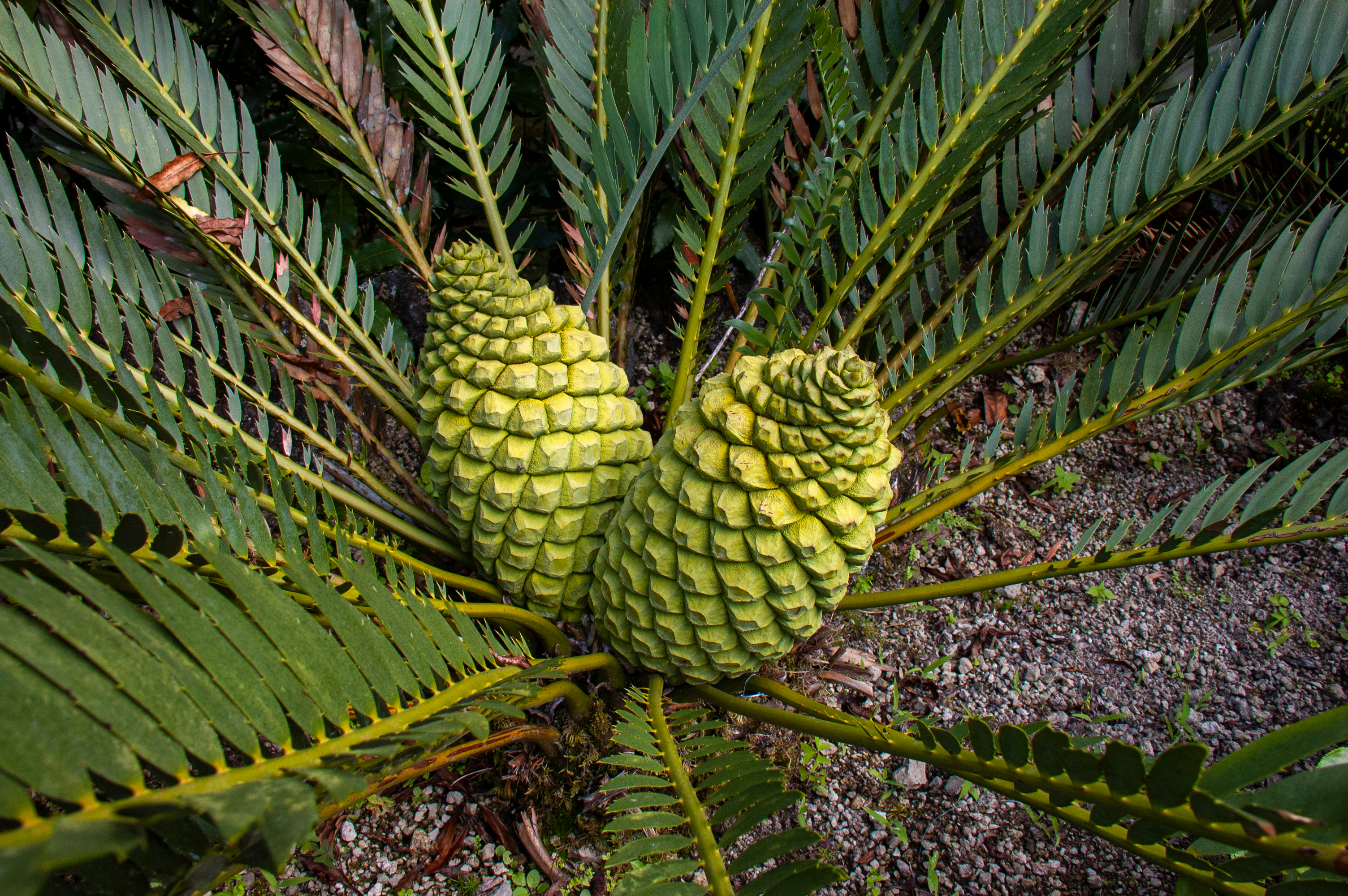Encephalartos nubimontanus
(Encephalartos nubimontanus)

Description
Encephalartos nubimontanus is a species of cycad which is native to Limpopo, South Africa. It is a cycad with an arborescent habit, with an erect or decumbent stem, up to 2.5 m tall and 35-40 cm in diameter, sometimes with secondary stems originating from basal suckers. The pinnate leaves, arranged in a crown at the apex of the stem, are 1–2 m long, supported by a stem about 23 cm long, which has a characteristic reddish ring at the base; they are composed of numerous pairs of lanceolate, leathery leaflets, up to 25 cm long, with a toothed margin and a pungent apex, arranged on the rachis at an angle of 70°. It is a dioecious species, with male specimens presenting from 1 to 5 sub-conical, pedunculated, 25–40 cm long and 5–9 cm broad cones, and female specimens with 1-3 ovoid cones, 35–40 cm long and 18– wide 20 cm, light green color. The seeds are roughly ovoid, 3.5-3.8 cm long, covered with an orange-red sarcotesta. Encephalartos is a genus of cycad native to Africa. Several species of Encephalartos are commonly referred to as bread trees, bread palms or kaffir bread,since a bread-like starchy food can be prepared from the centre of the stem. The genus name is derived from the Greek words en (within), kephalē (head), and artos (bread), referring to the use of the pith to make food. They are, in evolutionary terms, some of the most primitive living gymnosperms. All the species are endangered, some critically, due to their exploitation by collectors and traditional medicine gatherers. The whole genus is listed under CITES Appendix I which prohibits international trade in specimens of these species except for certain non-commercial motives, such as scientific research. Several of the species possess stout trunks. In E. cycadifolius, the main trunks are up to 10 feet (3.0 m) high, and several of them may be united at a base where a former main trunk once grew. The persistent, pinnate leaves are arranged in a terminal spreading crown, or ascending. The rigid leaflets are variously spiny or incised along their margins. The leaflets have a number of parallel veins and no central vein. Male cones are elongated, and three or four may appear at a time. Female cones are borne singly, or up to three at a time, and may weigh up to 60 pounds (27 kg). In some species, male cones with ripe pollen emit a nauseating odour. When the pollen has been shed and the males cones decay, a strong odour of acetic acid has also been noted.
Taxonomic tree:







